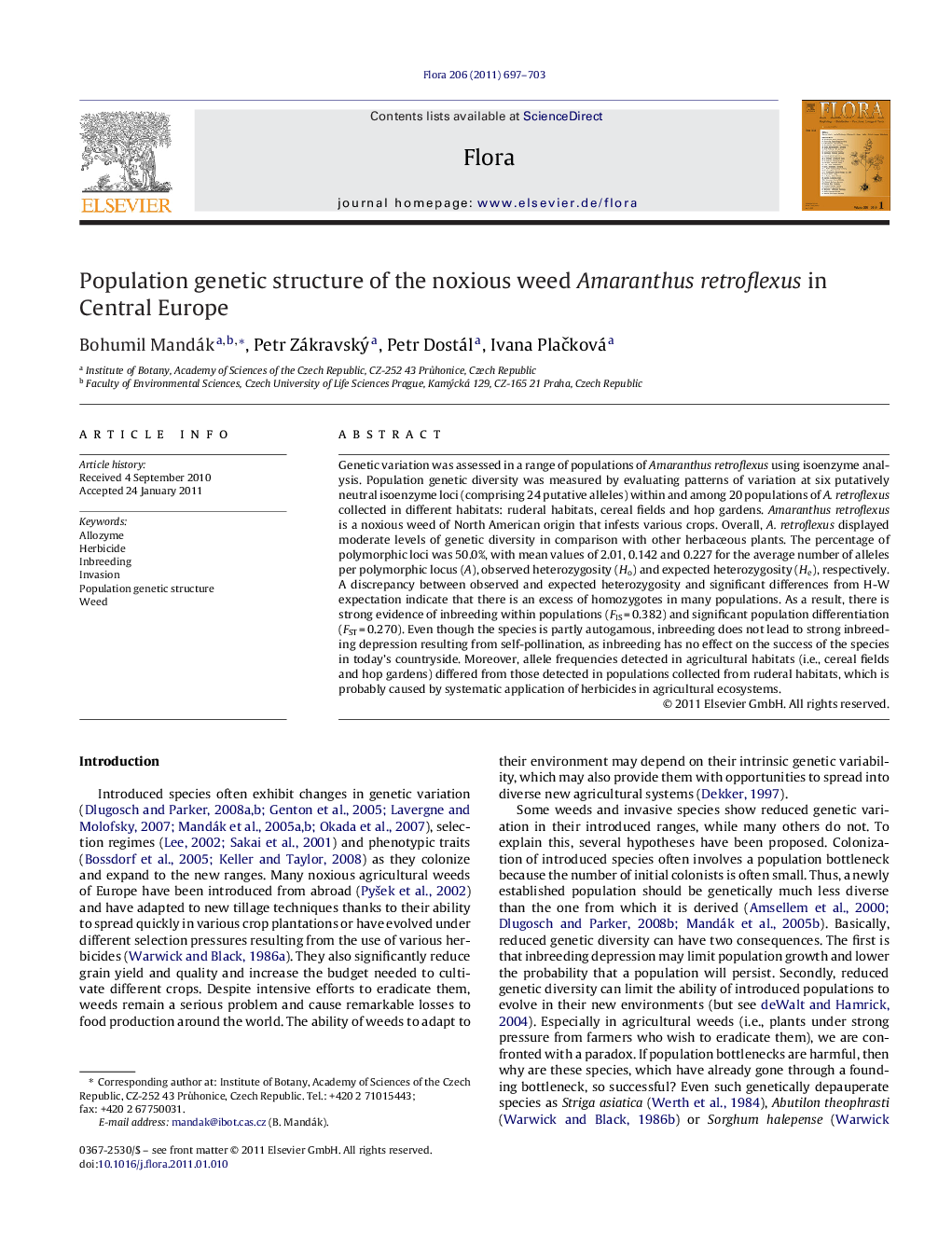| Article ID | Journal | Published Year | Pages | File Type |
|---|---|---|---|---|
| 2179975 | Flora - Morphology, Distribution, Functional Ecology of Plants | 2011 | 7 Pages |
Genetic variation was assessed in a range of populations of Amaranthus retroflexus using isoenzyme analysis. Population genetic diversity was measured by evaluating patterns of variation at six putatively neutral isoenzyme loci (comprising 24 putative alleles) within and among 20 populations of A. retroflexus collected in different habitats: ruderal habitats, cereal fields and hop gardens. Amaranthus retroflexus is a noxious weed of North American origin that infests various crops. Overall, A. retroflexus displayed moderate levels of genetic diversity in comparison with other herbaceous plants. The percentage of polymorphic loci was 50.0%, with mean values of 2.01, 0.142 and 0.227 for the average number of alleles per polymorphic locus (A), observed heterozygosity (Ho) and expected heterozygosity (He), respectively. A discrepancy between observed and expected heterozygosity and significant differences from H-W expectation indicate that there is an excess of homozygotes in many populations. As a result, there is strong evidence of inbreeding within populations (FIS = 0.382) and significant population differentiation (FST = 0.270). Even though the species is partly autogamous, inbreeding does not lead to strong inbreeding depression resulting from self-pollination, as inbreeding has no effect on the success of the species in today's countryside. Moreover, allele frequencies detected in agricultural habitats (i.e., cereal fields and hop gardens) differed from those detected in populations collected from ruderal habitats, which is probably caused by systematic application of herbicides in agricultural ecosystems.
